Andy takes a 1987 Sony Watchman portable CRT TV and transforms it into a working retro arcade system—without modifying the TV itself. Using a Raspberry Pi Pico, custom NTSC video generation, a hand-built RF modulator, and an Atari joystick, he codes an original Space Invaders–style game that broadcasts wirelessly to the Watchman. Along the way, he tackles composite video generation from scratch, resistor ladder DAC design, precise timing with PIO and DMA, and building RF circuitry from a 1985 magazine schematic.
Watch the Project
Why the Sony Watchman?
Andy set out to transform a Sony Watchman portable CRT television from 1987 into a fully functioning retro-style video arcade. The challenge was to achieve this without making any permanent modifications to the TV itself. With no video inputs, only an antenna and headphone jack, the Watchman wasn’t built with gaming in mind. But by combining modern microcontrollers with some old-school RF circuitry, Andy proved that it could still be done.
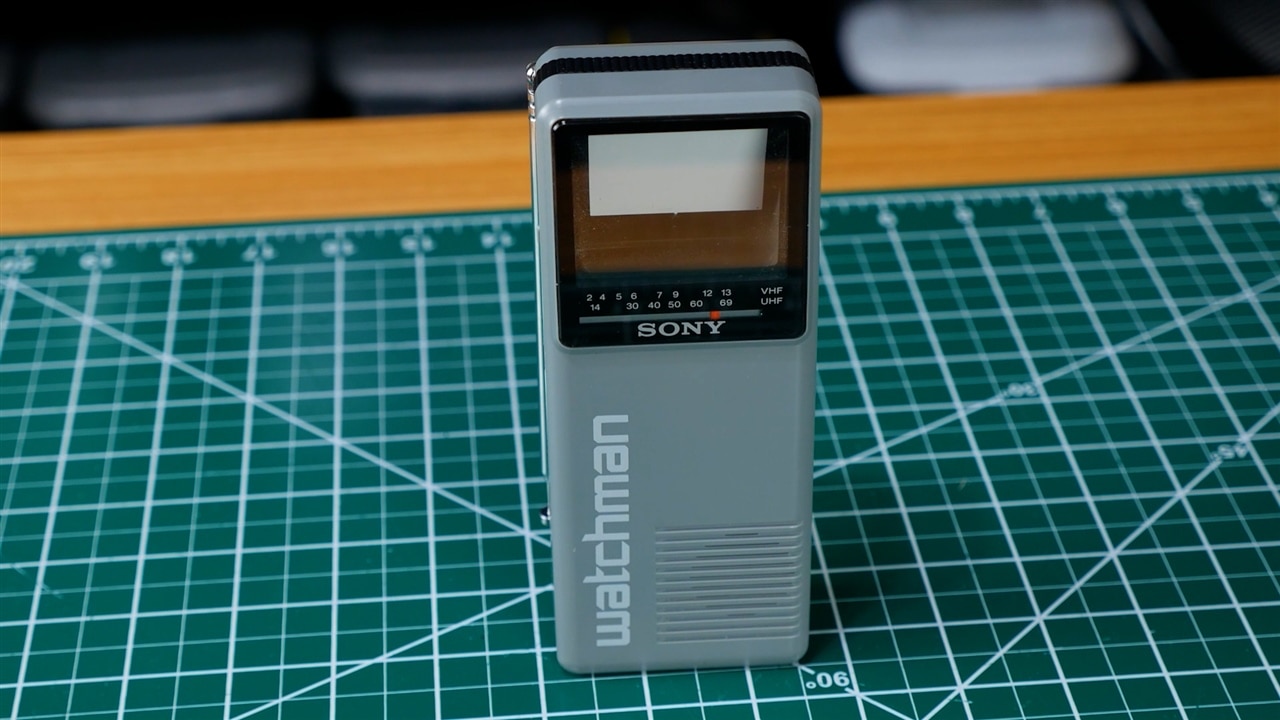
The Hardware at the Core
The Watchman model FD-10A has a unique design, featuring a flattened CRT tube with a vertical layout that shows the inside of the tube rather than using a mirror. Powered by four AA batteries, it was originally designed for analogue broadcasts, something long gone in the US since the late 2000s. To breathe new life into it, Andy needed to generate his own TV signal, which meant building a low-powered RF transmitter.
The hardware core of the build is a Raspberry Pi Pico, chosen to run the custom arcade game. Since the Pico lacks video output, Andy implemented composite video generation entirely in software, starting with a resistor ladder DAC to convert digital signals into analogue voltages. After testing with simple waveforms, he coded precise NTSC signal timings, using the Pico’s PIO (programmable I/O) and DMA (direct memory access) to offload the heavy lifting and free the CPU for game logic. To keep visuals smooth, he implemented double buffering, allowing frames to alternate cleanly without tearing or skipped frames.
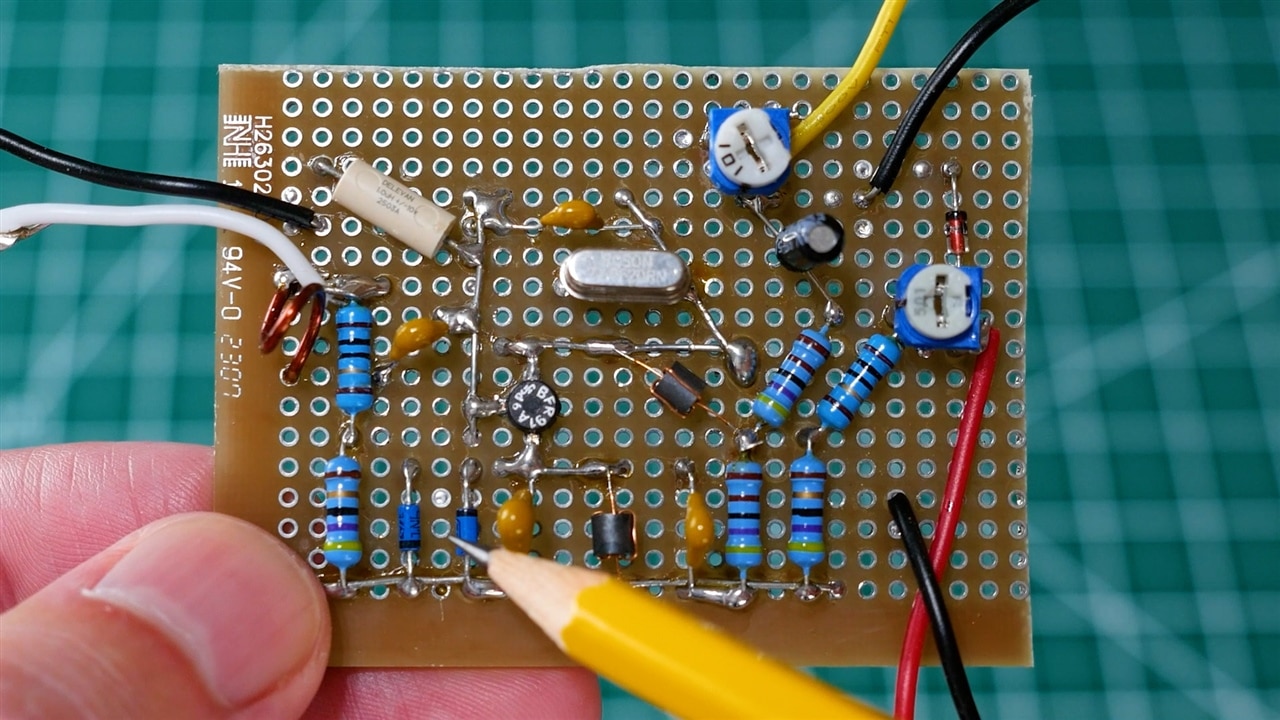
Bringing in RF Modulation
Rather than hack the Watchman for composite input, Andy looked back to the technology of the era. He dug up a 1985 magazine schematic for a DIY RF modulator and set about building one on protoboard. This involved careful soldering on a board with a ground plane, winding custom inductors, sourcing a now-obsolete BFR91 transistor, and working around some ambiguous component specifications. It wasn’t straightforward—especially when it came to selecting the right inductors—but Andy pieced the circuit together and added modern conveniences like a USB breakout for power.
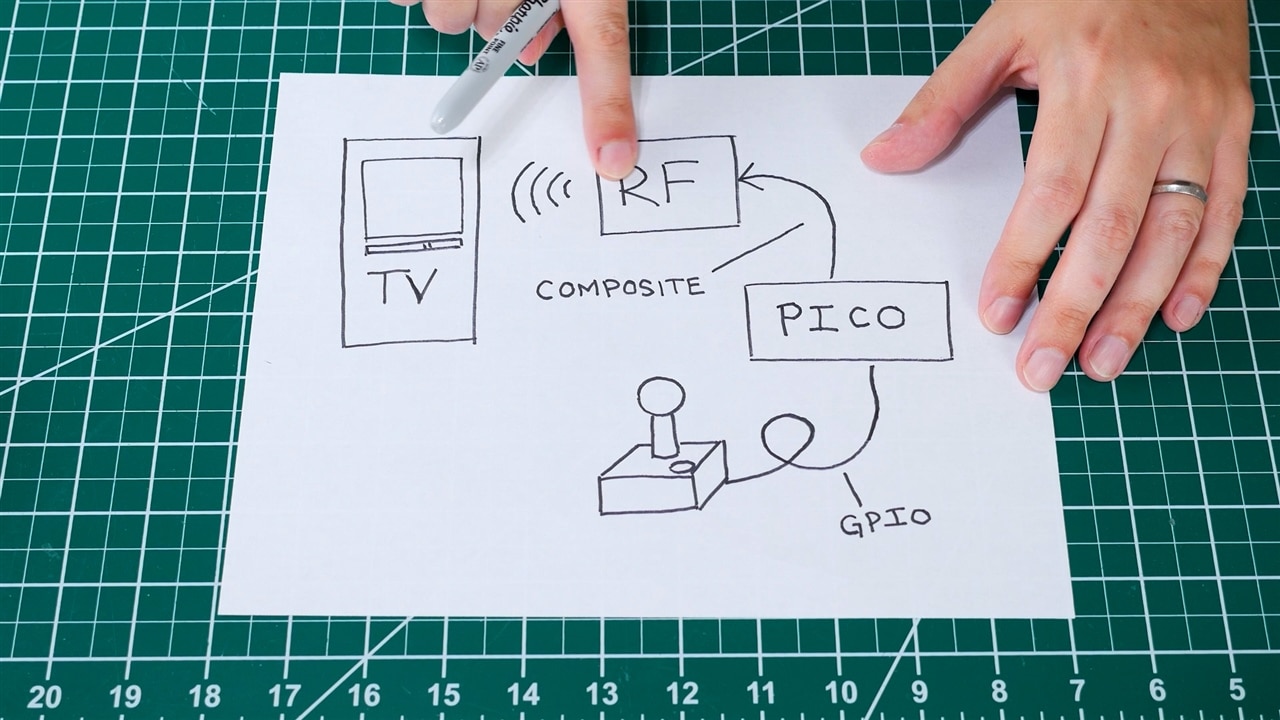

Coding the Game
For the game itself, Andy coded an original title called Cosmic Attack, inspired by classics like Space Invaders. Graphics were designed by hand on graph paper before being translated into byte arrays, mimicking the workflow of early developers. He even wrote his own sprite and text rendering routines, since the Pico lacks built-in graphics hardware. Input was handled by an Atari 7800 joystick, wired to the Pico through a simple DB9 connector.

Overcoming the Challenges
There were hurdles along the way: video standards mismatches, failed attempts with existing code libraries, tricky timing requirements, and uncertainty around RF component choices. But overcoming those challenges was part of the fun. The result is a working prototype arcade system powered by nothing more than a Raspberry Pi Pico, a handful of components, and a lot of persistence.
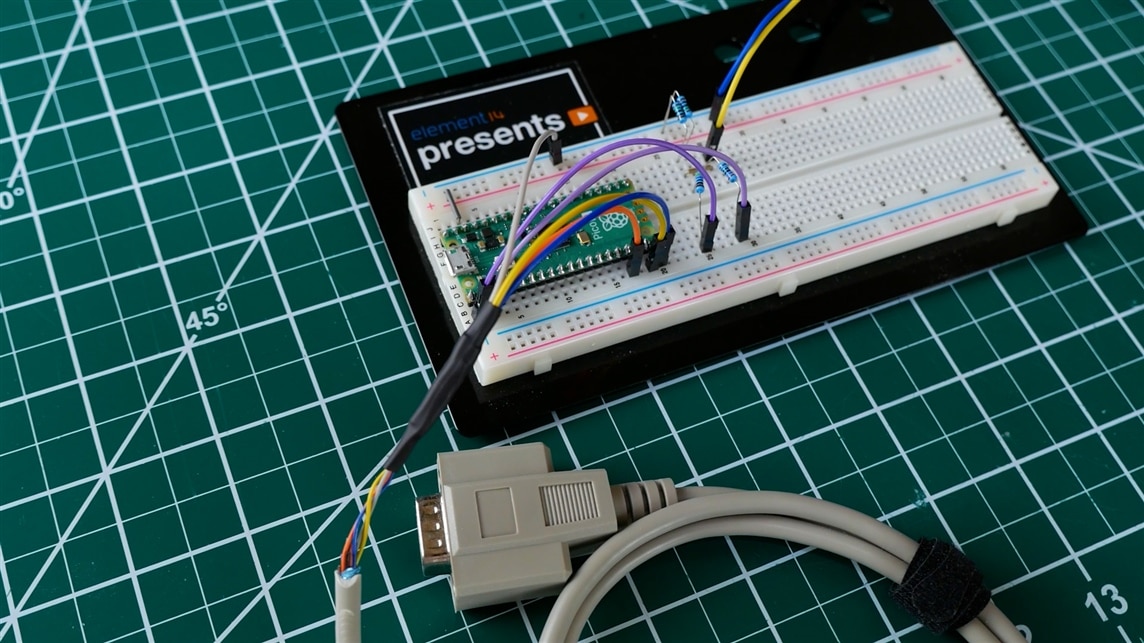
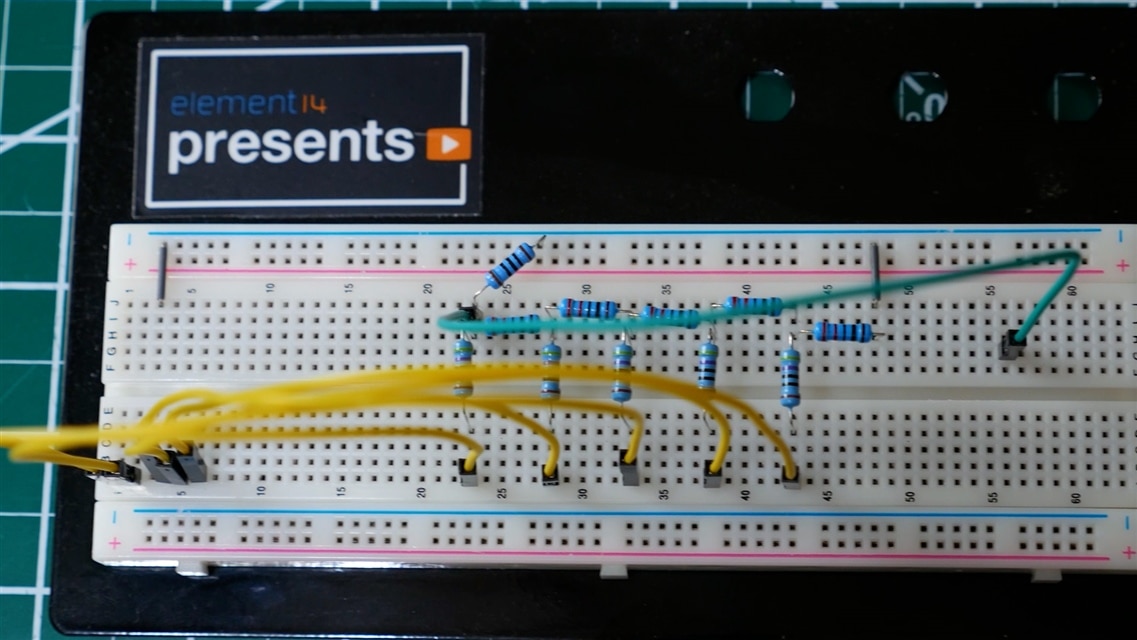
A Watchman Reborn
After countless refinements, the system came to life. The Pico’s video output was fed into the homemade RF modulator, which in turn broadcast wirelessly to the Watchman’s antenna. Scanning the channels revealed the game running on the tiny 2-inch screen, proving the concept worked!
Andy plans to revisit the project again in the future to refine the design further, but for now, the Watchman has been given a second life as a portable retro gaming machine.
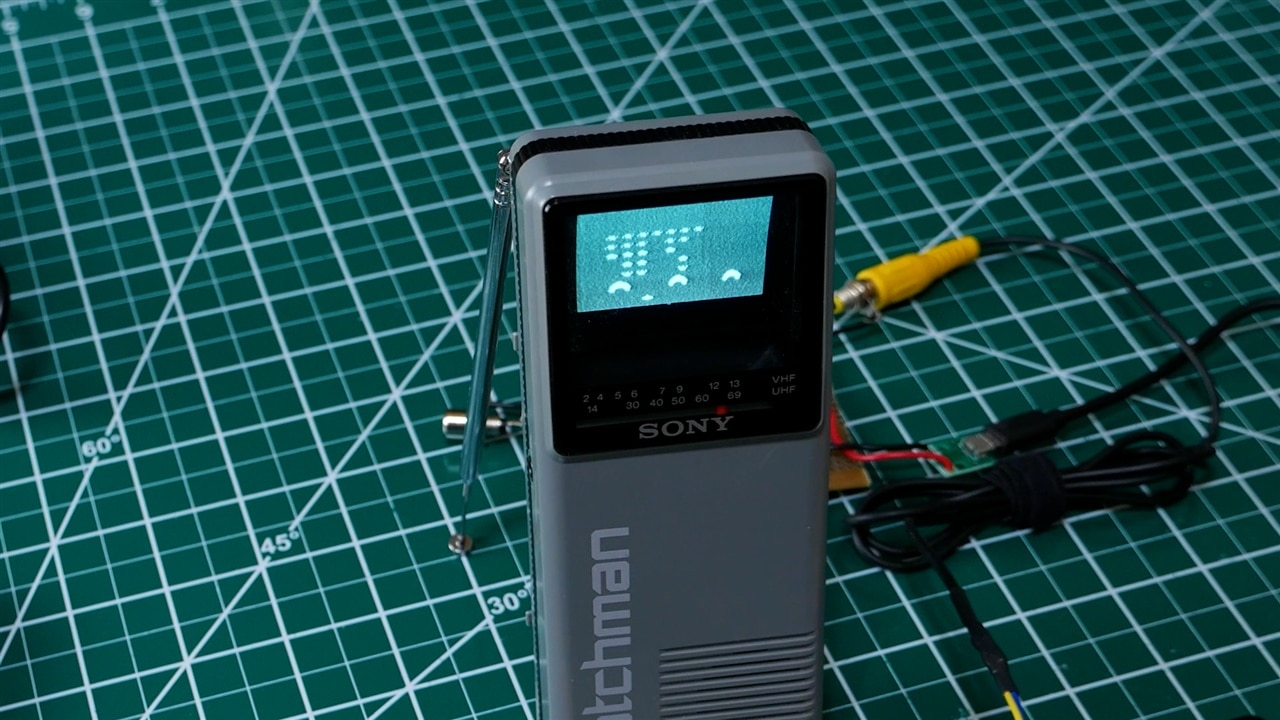
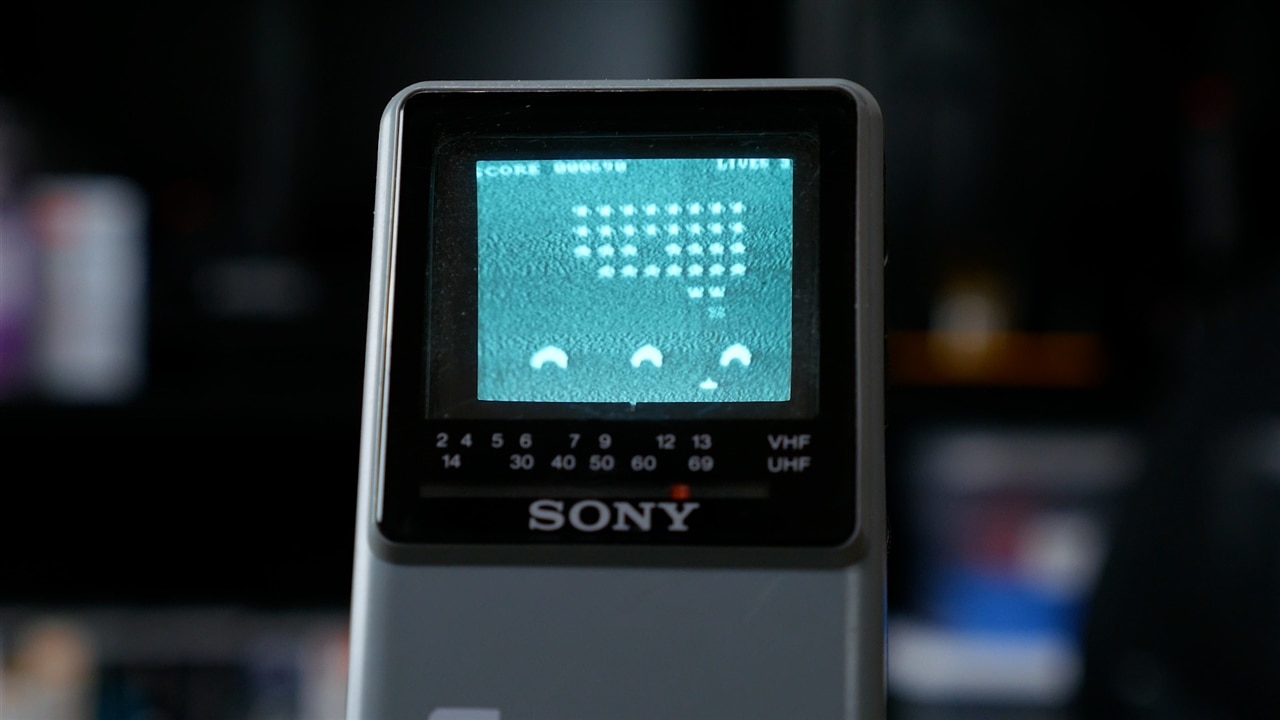


Top Comments
-

DAB
-
Cancel
-
Vote Up
0
Vote Down
-
-
Sign in to reply
-
More
-
Cancel
Comment-

DAB
-
Cancel
-
Vote Up
0
Vote Down
-
-
Sign in to reply
-
More
-
Cancel
Children